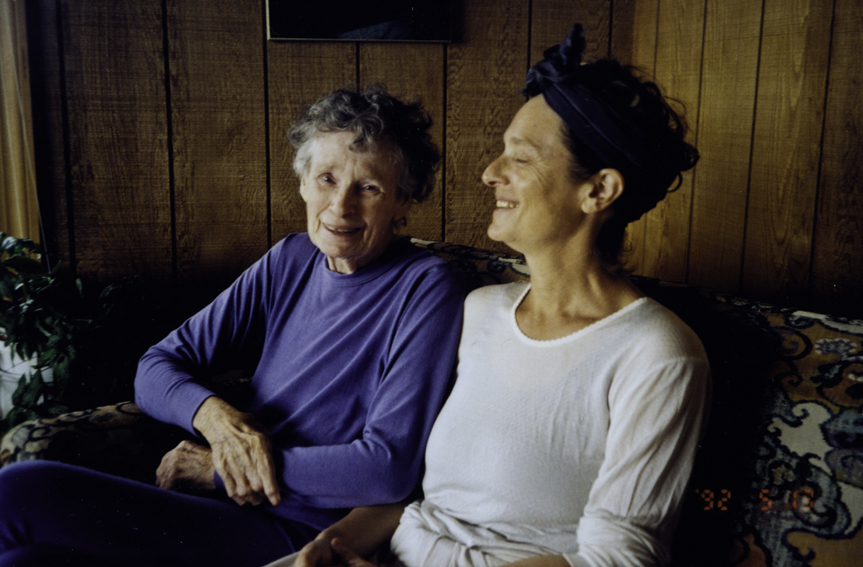
Phyllis May Shewcroft Kuffler
(1914-2003)
Although Phyllis did not often discuss "the news", she kept herself informed about world affairs in a nuanced way. We are particularly reminded in these times of her 1943 anti-war poem Postscript:
What have I to give the world but sighing
A world grown weary of a soldier's dying
They plan the glory of a future hour
And forget the victims of their bloody power
If I had voice to scream above this hell
No tale of vivid glory would I tell
But pleading to the minds and hearts of men
Never let this hatred come again
You alone who are among the living
Can know peace when you have learned forgiving
But who of you will hear a soldier's sighing?
Who is but one of many, many dying.
Phyllis was born in New South Wales, Australia, the granddaughter of Irish immigrants. She and her sister Joyce graduated from Sydney University becoming among the first women in Australia to receive professional degrees respectively in pediatrics and law...
During her youth Phyllis developed to a high degree some of the talents that were evident throughout her life. She became facile in drawing, millinery, knitting and sewing. After high school she taught botany, took classes in hat making and cooking, read law for a year and then decide to enter medical school. At university she was a member of the debating team and of the drama club of the Catholic Student Association.
While a medical student, Phyllis attended neurophysiology lectures given by Jack Eccles and Stephen Kuffler, a young Hungarian with a medical degree from the University of Vienna who had sought refuge in Australia in 1939. Steve notice that Phyllis asked questions about matters not yet understood and Phyllis noticed Steve's earnest passion for his work. She made the firm decision that he was the one and only man for her. They were married in 1944.
In November of 1945 they set sail for San Francisco with their first-born daughter Suzanne on one of the first civilian boats out of Australia after WWII. Their destination was Chicago where Steve took a position in the Physiology Department of the University of Chicago. Damien was born in 1947, the same year Steve began working summers at the Marine Biological Laboratory, thereby beginning the family's a life-long association with Woods Hole.
In 1948 they moved to Baltimore, Maryland where Steve took a position in the Wilmer Institute of Johns Hopkins Medical School. Julian was born in 1948 and Eugenie in 1949.In Woods Hole in the 50's Phyllis organized Friday night square dancing and folk dancing in the MBL Club. In the 60's, in coordination with Homer Smith of the MBL and the painter Sava Morgan, she operated an art studio under the eves of the Candle House. In the 70's she conducted the Woods Hole Summer Youth Symphony.
In the 60's Phyllis worked with the Attleboro school system, applying her evolving educational theories to an integrated arts program for Kindergarten through 12th grade. The program used visual, manipulative and kinesthetic methods for teaching core material. She experimented with the use of drawing to encourage writing skills. She used the Alphablank alphabet system to assist the transition from concrete letter forms to the memory of letters. She encouraged the use of poetry that she saw as a bridge between the metaphoric, associative imagery of the right cerebral hemisphere and the linear synthetic organization of the left cerebral hemisphere. During this period she also tutored Boston inner city children with learning disabilities, capturing their attention with popular mechanic magazines or art books with paintings of nudes. She got them hooked and they came back for more.
During the same years, Phyllis taught educational psychology at the Rhode Island School of Design. She encouraged students not only to learn new skills to better understand the learning process, but also to share and deepen that knowledge by teaching peers the new skill.
For many of these years Phyllis explored her world through painting. In perhaps her most public project she painted a twenty by thirty foot floor in a studio space at Harvard. The forms, shapes and colors provided another format for looking and moving...
In 1980 she received her Ph.D. from Harvard Graduate School of Education. Her thesis is entitled "The Role of the Arts in General Education: Theory and Practice".
